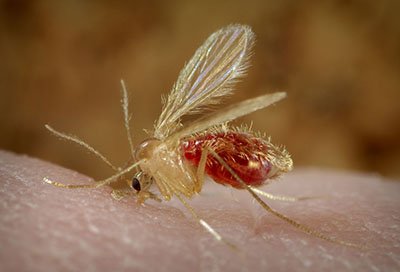BOINC Research Updates (How mining really should work)
Today we can write about two interesting research projects that are giving some updates.
Both have been running on the World Community Grid (one of many BOINC Projects). For those unknown to BOINC and Gridcoin, read the short description at the bottom of my post to learn more about what mining really should be all about. Rewarding good contribution to human kind.
Computing for Clean Water
The Clean Water project ran for almost 3 years (August 23rd 2010 to March 6th 2013), making a total of 37 535 years of computational work. In a recently published article they disclose some of the projects updates.
The goal for this project; Study water filtration efficiency
The Clean Water project studies ways that water can be filtered trough carbon nanotubes, a process that has been used for some time, and ways to lower the cost to improve the quality for world populations in locations that has power constraints. Water filtration today uses massive amounts of energy and is a big reason for the lack of clean water in the world.
Starting up a new lab at Tsinghua University
One of the original research members, Dr. Ming Ma, have started up a new lab at Tsinghua University, Beijing, China, a university that is ranked one of the top academic institutions in China and Asia. In this lab they will continue the work with analyzing and advancing the research that was started on BOINC.
The research team has been expanded with 4 new members that include one postdoc, Dr. Wei Cao; and three PhD students: Jin Wang, Kunqi Wang, and Yao Cheng, where they will work on two main task.
The first is a algorithm improvement of the software used. By incorporating new techniques that has been developed during the last three years and to implement them in the molecular dynamics software LAMMPS.
The second task is to investigate new systems with the algorithm being developed.
With these two tasks they wish to bring new and interesting information to the volunteer computing community.
Reference Document: Water transport inside carbon nanotubes mediated by phonon-induced oscillating friction
Drug Search for Leishmaniasis

Sandflies, such as the P. papatasi shown above, are responsible for the spread of leishmaniasis.
The Drug Search for Leishmaniasis project ran for a little more than 2 years (August 31st 2011 to August 15th 2013), making a total of 37 150 years of computation work. In a recently publicshed article they disclose some of the projcts updates.
The goal for this project; Find a viable cure
The Drug Search for Leishmaniasis project studies ways to combat one of the deadliest tropical diseases. It has more than 2 million infected and one form of the disease that primarily affects children, Leishmania infantum, are deadly if not treated promptly. The traditional treatments can cause severe side effects, including death, while drug resistance is spreading causing treatments today to be less effective.
The goal is to find a new viable treatment that causes less or no side effects that is inexpensive and easy to administer.
Potential New Treatments tested in lab
In their report they describe the success of new treatments that has been tested in labs. With 10 compounds selected, through the docking process on the World Community Grid platform, they started a process to test on human cell samples, called an in vitro evaluation.
As part of the process of drug discovery, we do testing to ensure that the promising compounds do not affect human cells, thus decreasing the chance of side effects. In addition, we evaluate the effectiveness of each compound against Leishmania, the parasites that cause leishmaniasis. The best compounds are those that kill the parasites at a low dose and do not affect the human cells even at higher doses.
Four compounds where selected as good candidates after the tests and have been tested on Hamsters, which has a similar reactions to leishmaniasis, and groups of five where set for each compound.
One of the compound shows great results with induced an almost complete curing of the lesions in two out of five hamsters.
Next step is to synthesize more of the compounds that are showing best results and do another round of testing to increase efficiency.
That concludes our report for today
I would like to thank everyone for participating in research projects on the BOINC platform for making a real contribution to research in all areas of human kind.
What is BOINC+Gridcoin Research in short

BOINC (Berkeley Open Infrastructure for Network Computing, pronounced /bɔɪŋk/ – rhymes with "oink") is a distributed work platform that has been around since 2002 (15 years now) and rewards all participants with a score. BOINC consists of over 500,000+ active users and many more computers. It is a popular platform for researchers to do large amounts of distributed work upon. The infrastructure is already in place and no payment is required. Doing distributed work is purely voluntary, projects can be included and/or excluded by the user of their choosing.
Gridcoin Research is a Proof-of-Stake (PoS) cryptocurrency that rewards BOINC computation based on the BOINC RAC (Recent Average Credit) score. Some requirements are for projects to be listed on the platform, but are fairly easy to comply with. There are currently ~20+ Projects included that the network rewards users for.
Vote for me as Witness

Enjoying what I do and contribute to the community, please vote for me as a Witness or a Steemit Proxy Voter.
Voting on me as a witness you will support an active witness on Steem and BitShares. I believe a witness should keep up-to-date on current happenings and be a conduit between the many users and the system.
Read my Witness Posts: BitShares Witness - Steemit Witness
Support my Projects: Project Minnow Witness
Steemit: sc-steemit
BitShares: sc-ol
That is interesting. I had never heard of Bionic or Gridcoins. I keep thinking there is going to be an end to what cryptocurrencies can do, but I'm seeing more and different uses all the time.
Gridcoin is a humanitarian and low power consumption coin that strives to reward people that does good work on the BOINC platform. We have a team of almost 15,000 users and about 1,500 active crunchers to date. You are most welcome to visit us on Slack or just by browsing the #gridcoin tag here on Steemit to read more about our content and what we do.
We have a very active community and development team. Many of our users are writing good articles on Steemit and there are many good and informative posts on the topic.
I had no idea this was happening or possible. You write about some of the coolest stuff. Awesome.
Thanks for sharing and thank you for your support on my blog. I really appreciate you.
You never know what's out there until you hear about it ;)
You're doing great man, you're you on my great writers support list. Keep the good stuff going!
Great post @sc-steemit, I seem to have missed this one!
So much is happening in the BOINC and Gridcoin sphere nowadays it's hard to keep up :)
Glad you liked it.
I missed the reward window on the main post, but I got it in there on your comment :)
Nice. So what's your longer-term goal here?
I gave you a follow :) This was in the 'hot category by the way. Talk soon!
Well, there is no long term goal for myself personally in this. The article is about two of the research projects and their updates. Long term goal would be no more research, and well... yeah ;P
Ah of course :) Awesome man. What are some of your goals for Steemit then?
We should engage in each other's content more. I followed you earlier. Talk soon.
Upvoted and RESTEEMED!
Good summary of what can be achieved with Boinc. Good to see that.
There are many things that have been, and will be, made possible through the BOINC platform. We just need to write and talk about it :)
Great post! I appreciate the update. I have been participating to the BOINC project through the Gridcoin network for some time. Unfortunately, the mining pool I use as a BOINC manager has not made any payouts and the site has not been updated in some time. It would be great if there were a more organized community behind the effort.
It will also be interesting to see how well the BOINC/Gridcoin network will fair against the likes of bigger initiatives such as Golem, and SONM.
I advice you to try the GRCpool since you are most likely using Katiees Pool. Unfortunately katiee hasn't been around for a long time and her pool is still online making sporadic payouts.
I think Gridcoin has a great advantage towards other networks since it's based on a use-and-we-pay method. Golem will be a pay-for-usage model. We also have a long developed open-source program with BOINC being 15 years this year.
I can't see why Gridcoin couldn't be a good competitor. Just because Gridcoin wasn't founded on a large scale ICO with bells, whistles and unicorns doesn't mean its any less of a big player.
Love it. The things we can do with the computing power out there in the world are truly remarkable. So much of the research that drives innovation involves brute forcing nature until it reveals its secrets . The more computers we can point towards research like this the better the world will be.
The further we advance science, the more this becomes true. As an example, if we had literally infinite computational power my lab would be able to instantly identify the markers and fully model the progression of Alzheimer's. Another lab would then be able to instantly identify either a stop-medicine or a cure by modelling the interaction of every possible molecule with the disease.
Exciting times, and very depressing to see where much of the crypto compute power is actually pointed...
I've read there is unsolvable problem with these type of mining as it's the different project that are reporting the share or work that is being done thus miners have to trust those institutions. I read that a long time ago. I don't know if this is still the case.
Hi @teamsteem, I'll try clarify for you.
The actual research we are talking about here is distributed through the BOINC platform by research organisations. These organisations all run their own servers, and distribute 'credit' at their own internal rates. Therefore, 10 credit on one server may be equivalent in terms of work to 1000 credits on the next server.
The way Gridcoin deals with this issue is that the daily GRC awarded is split evenly between the projects, and then split based on credit between the miners on each project server. This way, one server can't break or cheat the system by awarding millions of credits for free in return for practically no research.
The real issue with this type of mining is collating the data from all the servers, as they can be taken offline for many reasons. Gridcoin backpays work though, so even if a server was taken offline the miner does not lose any earnings, instead being paid when the project is next registered by the Gridcoin network.
I hope that helps. Let me know if you have any more questions. =)
Is this a 100% trustless system or doesn't the system have to rely on the honesty of those who distribute the credit.
If so I'd love to be able to see the documentation on this because back then there was no known solution to this problem and as far as I'm aware this is still the cause due tot he limitation of creating useful information through "mining" through BIONIC vs creating useless information (besides securing the network) through proof-of-work mining.
The credit is distributed by the projects, so I suppose that could in theory be cheated by the project admins. Gridcoin is distributed entirely autonomously based on those credit numbers. Therefore, the Gridcoin proportion of the payout chain is trustless (all the source code is on github).
At worst, a project admin would be able to give one user infinite credits on a regular basis, and the Gridcoin network would then pay out:
[1/number_of_projects]*daily_GRC_mint
to that user. So, yes, there is some potential for abuse. It will never happen though as:
Projects are carefully vetted before being eligible for reward. This is based on a community vote adding the project to the rewards 'whitelist'.
The project admins are researchers that want BOINC and Gridcoin members to help them complete their studies. They have no motivation to cheat the system (plus it would be pretty obvious).
I am not sure I entirely understand the second part of your comment. The Gridcoin network does both. Primarily, it 'mines' through BOINC work but the network is additionally secured by a POS system which continues to function even if BOINC is 100% down.
You answers my questions. That's exactly what I read before. Gridcoin isn't fully trustless at this point. Nonetheless it is working at this point and doing some good but because it isn't fully trustless it cannot expect to do what a trustless crypto can do.
I wonder if EOS could help making an idea like Gridcoin to become trustless.
EOS is very interesting, much like all the Graphene based systems we have today. But it would not help Gridcoin become more trustless in the fact that it still needs to rely on the BOINC projects statistics that they generate and base the rewards thereafter.
But as @dutch points out, this is the reason the community votes on new projects and that not all projects are just automatically included.
The network itself is secured enough with the basic PoS system that it is built upon.